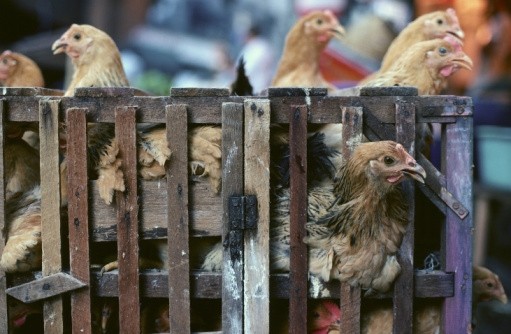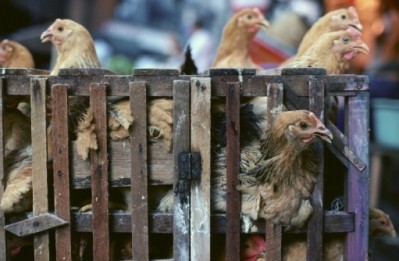Calls for chicken reserve to rescue Chinese chicken sector

Something of a celebrity in Chinese agricultural and official circles, Lin Yi told policy-makers at the National People’s Congress (NPC) that the poultry sector was essential to "rural economic welfare and stability" and called for the establishment of a reserve by government which allows it to stimulate prices by buying up and storing stocks through appointed meat companies.
A similar system already exists for the pork sector. "It should work in the same way, coming into effect when [chicken] prices go below a certain level," Lin told the NPC.
Chinese chicken farmers face ruin as prices and consumption levels have softened due to fears over the H7N9 virus. The government has shuttered live poultry markets in the key poultry producing and consuming province of Guangdong, neighbouring Hong Kong.
Data published this week by the agricultural ministry shows the traditional peak demand season of Chinese New Year was a damp squib this year for chicken producers, with live chicken prices in the last week of January down 4.42% year on year to an average RMB17.31/kg. The fall in egg prices was worse, slipping 10.21% year on year to RMB8.62/kg. A survey of 27 wholesale markets nationwide meanwhile showed an average fall off in volumes of 8% year on year and 2.7% month on month. Farmers typically make an average profit of RMB3 per bird sold to slaughterers.
Given a dim outlook for prices, there are signs that farmers are starting to kill off flocks. The situation is made even more severe by the refusal of loss-making processing firms to honour contracts to buy birds from farmers, who have in turn been unable to pay for feed. Some slaughterers have also reneged on obligations to supply feed to contracted farmers, according to local media reports.
In the fourth week of January chick prices fell 10%, while data from the key southerly province of Guangdong – one of China’s wealthiest, and a key meat consumption zone – suggests significant destocking by breeders. Breeding stock has been reduced by 30-40% year on year in the last week of January. Prices of breeding stock meanwhile slipped 20%.
Chinese experts have valued the damage done to the sector in the past year at between RMB100bn and RMB200bn. The poultry branch of the China Animal Husbandry Association meanwhile is claiming the sector suffered losses of RMB100bn in 2013.
It’s worth noting that China’s poultry sector, like the pork sector, is increasingly integrated: Guangdong Wens Foodstuffs Co, which produces and processes chickens, is also a feed supplier. It claims to have lost RMB2.5bn in 2013, although a spokesman declined to elaborate.
Others predict a radical shake-out, with smaller-scale breeders exiting the contract breeding segment in particular. There are 70 million producers in this industry and the crisis is far from over. All players have been hit, including chicken breeders, slaughterhouses and processors, and egg producers.
The crisis has also highlighted a central weakness of China’s agricultural sector. One is the lack of credit: poultry farmers are denied access to credit from the state-run banks, which remain wary about accepting livestock as collateral – while land-use rights – the legal status of most of China’s farmland – are likewise not accepted as collateral for loans. Poultry farmers have complained of having to turn to China’s grey or shadow banking sector, which typically charges very high interest rates to private sector borrowers turned away by the dominant state lenders.
An increasingly desperate poultry sector has also sought to convince the government to stop reporting the disease as ‘bird flu’ and rather term it by the more scientific-sounding H7N9 term. While the World Health Organization and China’s own quarantine authorities use the ‘avian flu’ term, the agricultural ministry here has argued that there is no scientific proof that the pandemic is transferred from birds to humans.
Data for 2013 suggests the poultry numbers in Guangdong dropped sharply, down 8% to 1.04 billion birds and a flock of 322 million, down 9% year on year. It appears that 2014 may prove an equally calamitous year for the sector. At almost 19 million tons, poultry meat contributes almost 20% of China’s meat output in 2013.








